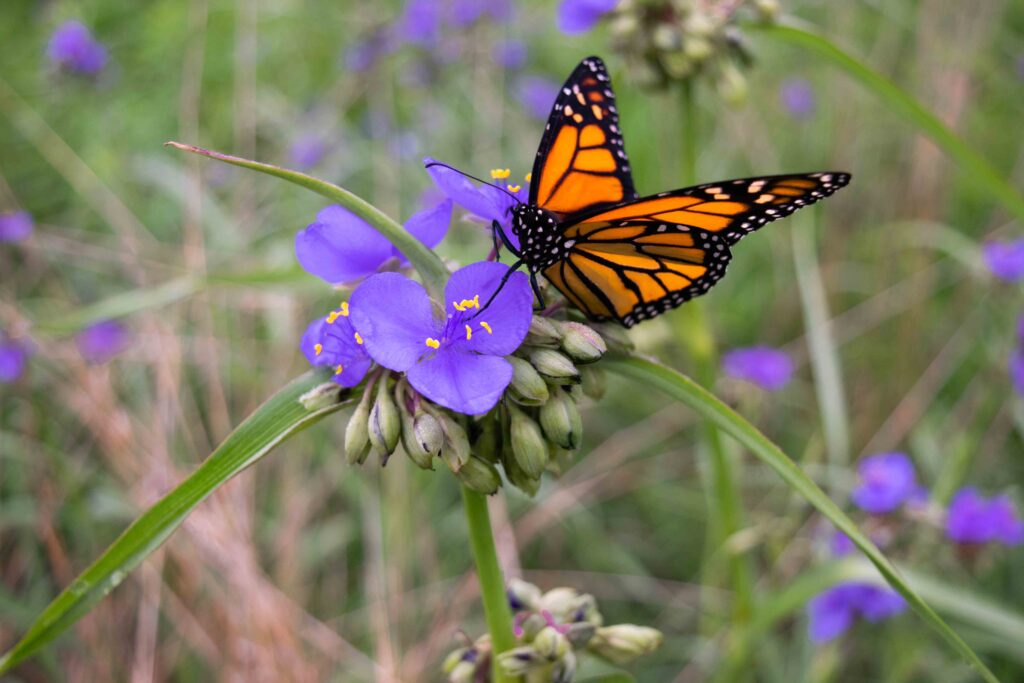“When a species is listed, it can impact how agricultural producers are able to operate.” —Brigit Rollins, NALC Staff Attorney
By Drew Viguet
National Agricultural Law Center
U of Arkansas System Division of Agriculture
Feb. 10, 2025
Fast facts
- National Agricultural Law Center webinar will discuss details of proposed monarch butterfly listing
- NALC Staff Attorney Brigit Rollins is presenting
- Registration available online
FAYETTEVILLE, Ark. — When a species is listed as threatened under the Endangered Species Act, or ESA, it receives various protections — what impact could those protections have on agriculture?
That’s the question following the December 2024 proposal from the U.S. Fish and Wildlife Service, or FWS, to list the monarch butterfly as threatened under the ESA. Among other factors in its declining numbers, agricultural production and land use impact the butterfly by reducing milkweed habitat through land conversion and pesticide use, which disrupts their breeding and migration.
“This process began at least as far back as 2014 when various environmental groups submitted a petition to FWS to list the monarch butterfly,” said Brigit Rollins, staff attorney at the National Agricultural Law Center, or NALC. “A decade later, FWS agreed, proposing to list it as a ‘threatened’ species.”
Rollins will discuss what the designation of “threatened” means, as well as other components of the proposed listing and which aspects of the proposal would especially impact agriculture during the NALC’s Feb. 19 webinar. The presentation, “Monarch Butterfly: Exploring the Proposed ESA Listing,” begins at 11 a.m. Central/Noon Eastern and is free to attend. Registration is available online.
“When a species is listed, it can impact how agricultural producers are able to operate,” Rollins said. “In the case of the monarch butterfly, the proposed listing from FWS provides exemptions for agriculture and citizen conservation efforts. Other areas, such as pesticide restrictions, are unaddressed. It’s possible that details about pesticide use would be included in the final listing decision or in a separate rule.”
The listing is only a proposal for now and is open for public comment through March 12.
“The agency has requested feedback from commentors on a variety of topics, including possible economic impacts of the proposed decision and how to address pesticide uses,” Rollins said. “Stakeholders can provide comments online.”
To read the full news release, click here.
